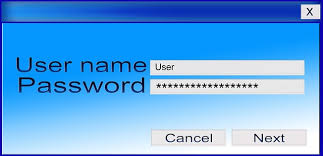 We warned our readers about the FBI alert regarding the Business Email Compromise scam on July 6. Cyber-criminals have successfully bilked US companies of over 3 billion dollars since January 2015. Typically this exploit starts by the attacker gaining knowledge of the CEO’s or other highly placed executive’s user credentials to their email account. This is most often done using a spearphishing email, but could also be accomplished ...
We warned our readers about the FBI alert regarding the Business Email Compromise scam on July 6. Cyber-criminals have successfully bilked US companies of over 3 billion dollars since January 2015. Typically this exploit starts by the attacker gaining knowledge of the CEO’s or other highly placed executive’s user credentials to their email account. This is most often done using a spearphishing email, but could also be accomplished ...
SEP

 Holy acronyms Batman! What the heck does this headline mean? Well, the National Institute for Standards and Technology (NIST) has removed two-factor authentication (TFA) via short-messaging service (SMS) from the approved list of two-factor authentication methods. The reason is that SMS is an unencrypted service, and the lack of encryption makes it too insecure for use in Federal authentication systems. NIST is recommending that all ...
Holy acronyms Batman! What the heck does this headline mean? Well, the National Institute for Standards and Technology (NIST) has removed two-factor authentication (TFA) via short-messaging service (SMS) from the approved list of two-factor authentication methods. The reason is that SMS is an unencrypted service, and the lack of encryption makes it too insecure for use in Federal authentication systems. NIST is recommending that all ... Bruce Schneier had an
Bruce Schneier had an  Actually there are way more than ten ways, but here are some I see all the time. We can play this like a game, so go ahead and give yourself a point for each one of these that apply to you. This game scores like golf – low score wins.
Actually there are way more than ten ways, but here are some I see all the time. We can play this like a game, so go ahead and give yourself a point for each one of these that apply to you. This game scores like golf – low score wins. Maybe you like the idea of two-factor authentication, but the Google Authenticator smartphone app seems too cumbersome. Or maybe you are not a smartphone owner, because you don’t like the idea of a phone that can track your location to within a few feet, and keeps sharing all your personal data with the apps on your phone. So you own a flip phone ...
Maybe you like the idea of two-factor authentication, but the Google Authenticator smartphone app seems too cumbersome. Or maybe you are not a smartphone owner, because you don’t like the idea of a phone that can track your location to within a few feet, and keeps sharing all your personal data with the apps on your phone. So you own a flip phone ... Google Authenticator is my favorite go-to app for setting up two-factor authentication. But what if you want to remove an account from Google Authenticator?
Google Authenticator is my favorite go-to app for setting up two-factor authentication. But what if you want to remove an account from Google Authenticator? The Apple OSX platform has long held the cache of being invulnerable to attack. Cyber-criminals have be crafting more exploits to target Macs, iPhones, and iPads, especially since 2012. The reason for this, as explored in a recent article on
The Apple OSX platform has long held the cache of being invulnerable to attack. Cyber-criminals have be crafting more exploits to target Macs, iPhones, and iPads, especially since 2012. The reason for this, as explored in a recent article on